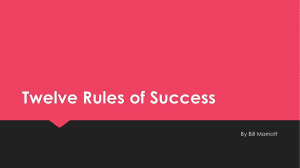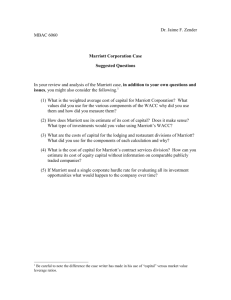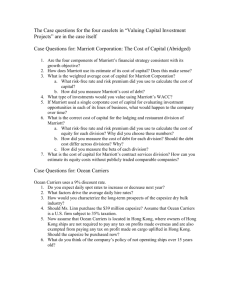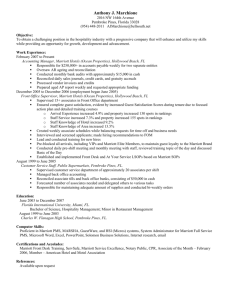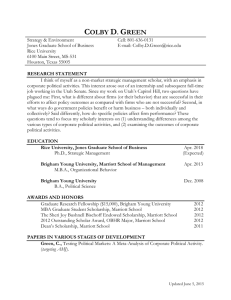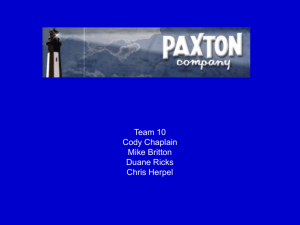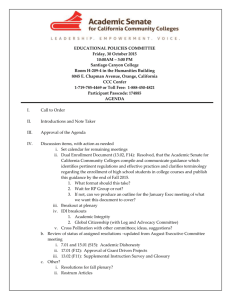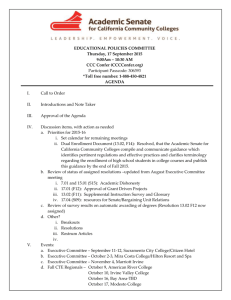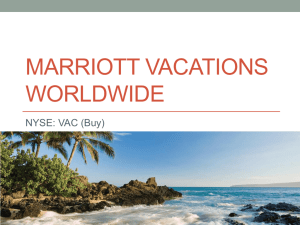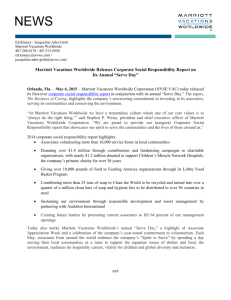Marriott Corp Case Questions
advertisement
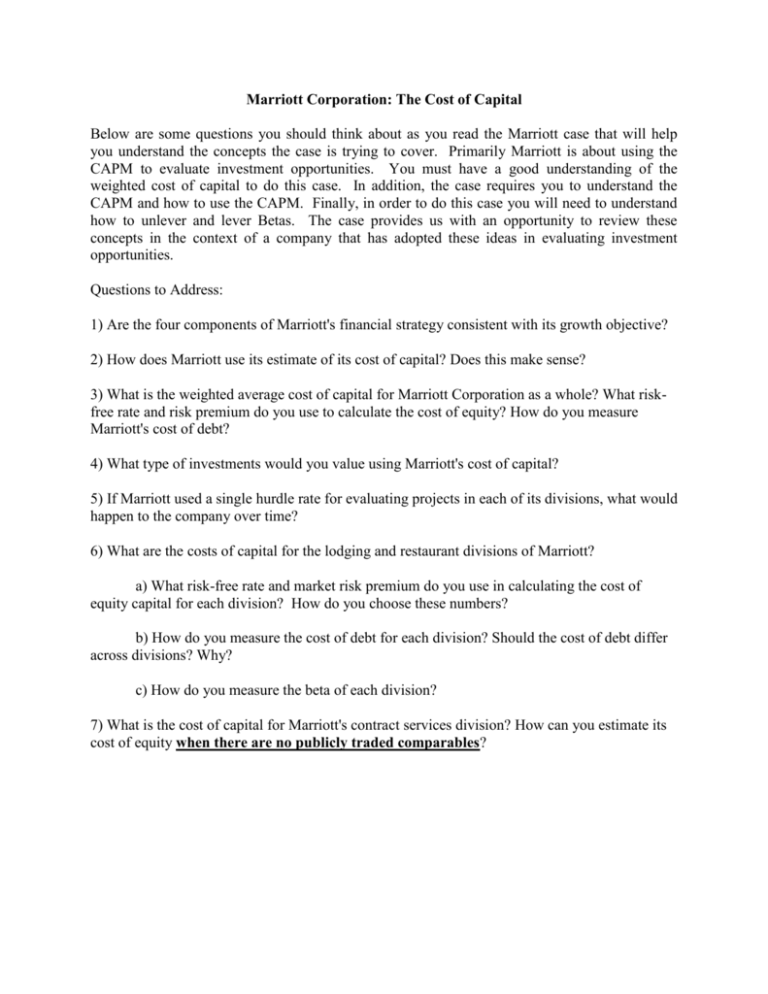
Marriott Corporation: The Cost of Capital Below are some questions you should think about as you read the Marriott case that will help you understand the concepts the case is trying to cover. Primarily Marriott is about using the CAPM to evaluate investment opportunities. You must have a good understanding of the weighted cost of capital to do this case. In addition, the case requires you to understand the CAPM and how to use the CAPM. Finally, in order to do this case you will need to understand how to unlever and lever Betas. The case provides us with an opportunity to review these concepts in the context of a company that has adopted these ideas in evaluating investment opportunities. Questions to Address: 1) Are the four components of Marriott's financial strategy consistent with its growth objective? 2) How does Marriott use its estimate of its cost of capital? Does this make sense? 3) What is the weighted average cost of capital for Marriott Corporation as a whole? What riskfree rate and risk premium do you use to calculate the cost of equity? How do you measure Marriott's cost of debt? 4) What type of investments would you value using Marriott's cost of capital? 5) If Marriott used a single hurdle rate for evaluating projects in each of its divisions, what would happen to the company over time? 6) What are the costs of capital for the lodging and restaurant divisions of Marriott? a) What risk-free rate and market risk premium do you use in calculating the cost of equity capital for each division? How do you choose these numbers? b) How do you measure the cost of debt for each division? Should the cost of debt differ across divisions? Why? c) How do you measure the beta of each division? 7) What is the cost of capital for Marriott's contract services division? How can you estimate its cost of equity when there are no publicly traded comparables?
